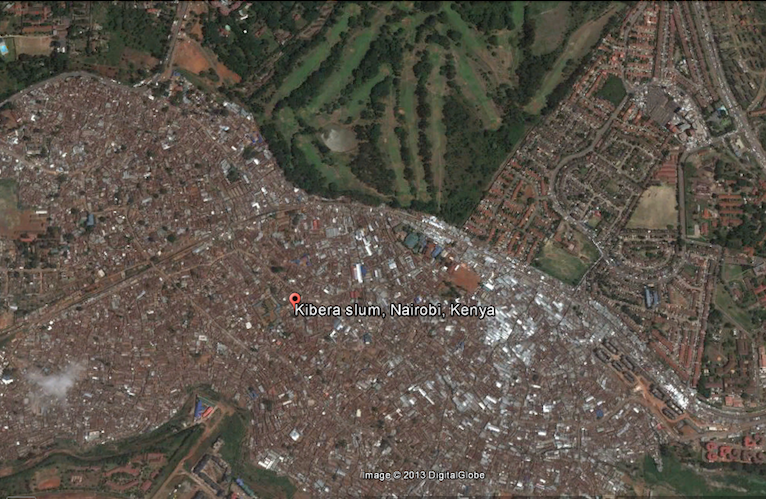 Source: Google Earth
Source: Google EarthA climate risk analysis (Mehrotra et al., 2009) of Nairobi indicates that drought caused by climate change will exacerbate the water crisis in the city. Rising temperatures and shifting rainfall patters caused by climate change are hazards that threaten fresh water availability. Neither the population nor their infrastructure is prepared. Demographic changes that include rapid population growth and an extreme rate of informal urbanization will continue to substantially increase Nairobi’s risk to water crisis.
Drought will affect the water reserves in the reservoirs of the Thika and Sasumua dams from which Nairobi draws the majority of its water (Karanja, 2011). Water shortages will be particularly acute in informal settlements where 60% of Nairobi’s citizens reside (UN Habitat, 2006). Despite being politically represented, the population of these settlements remains marginalized. Only 22 % of informal settlement households have access to direct water connection and consume significantly less than the wealthy minority (ibid.). The use and access to water is thus linked to class and wealth.
Nairobi has yet to establish legitimate policies to address climate change. However, numerous organizations and institutions are working to combat these issues. Pressure to improve and expand water services is beginning to gain momentum. Financing, local capacity building and enhanced monitoring and evaluation methods remain precedential priorities. Funding scarcities threaten to constrain Nairobi’s ability to properly address the problems.
In 2002 after the passage of the Water Act, many new institutions were created in a complex, decentralized system. Barriers to Nairobi’s adaptive capacity include a lack of coordination between these organizations and institutions which quite often lead to redundancies in their efforts.
In 2010, the Government passed the National Climate Change Response Strategy to oversee and coordinate Kenya’s climate change activities. Nairobi is working to implement awareness and educational programs to leverage the redevelopment opportunities climate change can bring. But this will continue to be limited without public participation in water distribution and consumption.
The passive consumer relationship that develops from traditional water infrastructure will exacerbate social and humanitarian crisis during drought. The current Water Act of 2002 needs to be modified in order to produce this transition from consumers to participants. A society of participants will have the capacity to handle crisis, particularly in times of drought.
An unprecedented amount of funding has been dedicated to urban slum upgrading in Kenya. To maximize the outcomes, Community Water Councils and co-ops must have control over the delivery stage of Kenya’s water system. These should be organized and audited by Water Service Boards as the program expands into rural areas. Progressive water pricing will fund this system change and deter large water users over time.
With water closer to the center of public life, crisis at all levels of distribution will be addressed with appropriate vigor, while making gains in the equity and political participation of informal communities.
This article is a product of Professor Shagun Mehrotra’s Climate Change and Cities class. Views expressed are entirely those of the authors.
References
Karanja, Joseph. “Improving water provision in Nairobi through control of non-revenue water.” Global Water Summit, page 212-213, (2011) Web
Mehrotra, S., C.E. Natenzon, A. Omojola, R. Folorunsho, J. Gilbride & C. Rosenzweig. (2009). Framework for city climate risk assessment. Washington, DC: World Bank.
United Nations Human Settlements Programme (UN-HABITAT). Nairobi Urban Sector Profile. Fernando Da Cruz, Kersten Sommer, and Ombretta Tempra. Rapid Urban Sector Profiling for Sustainability (RUSPS), 2006